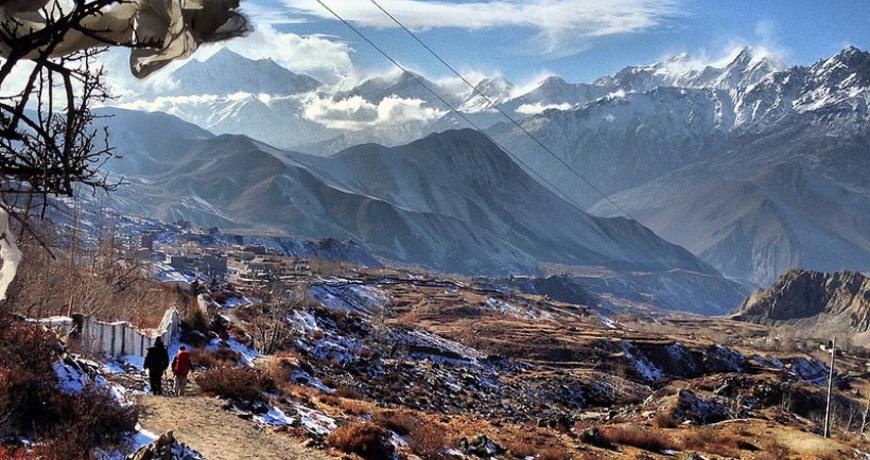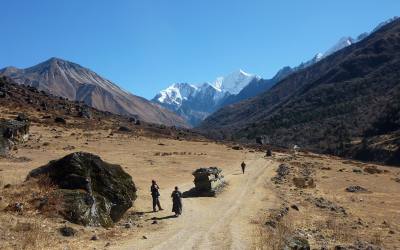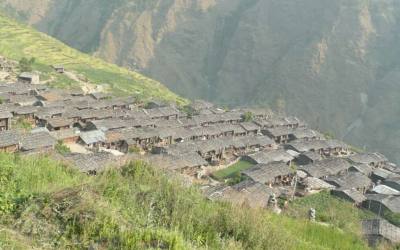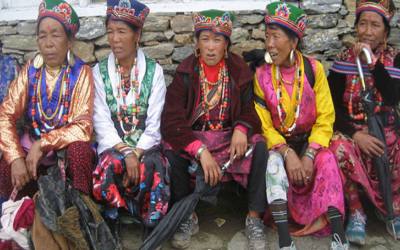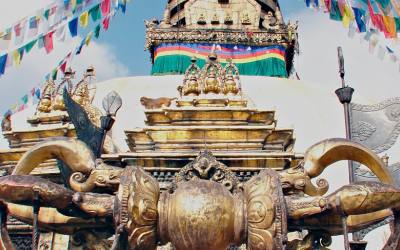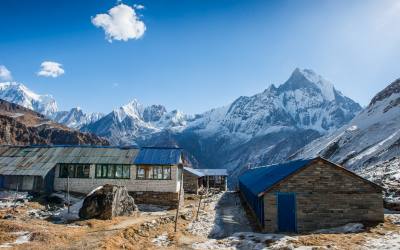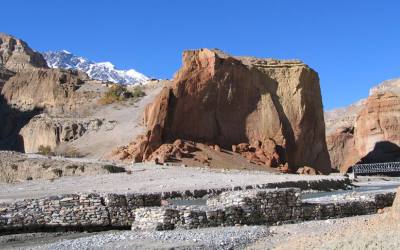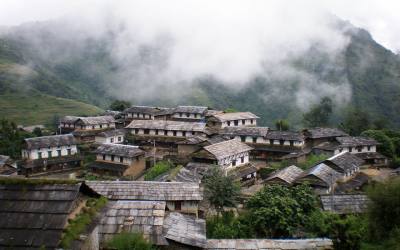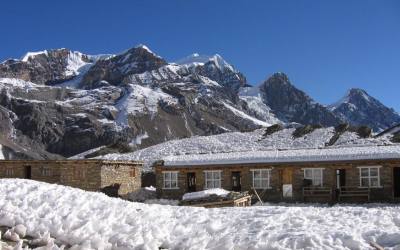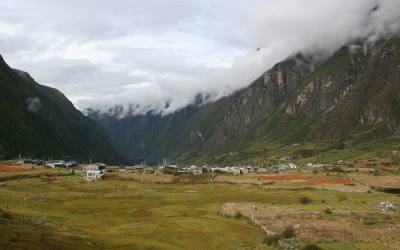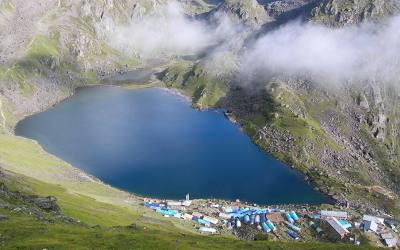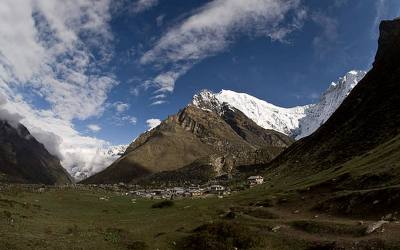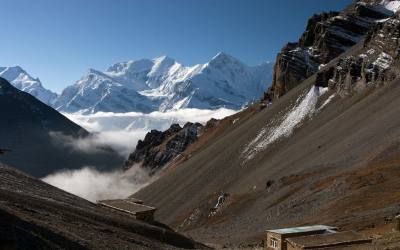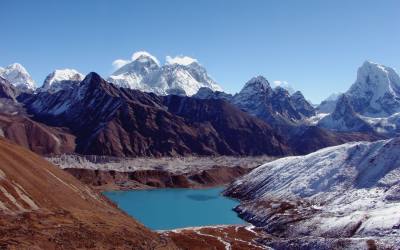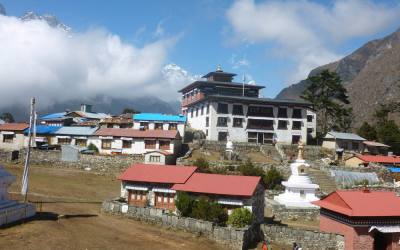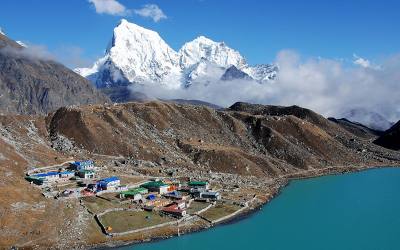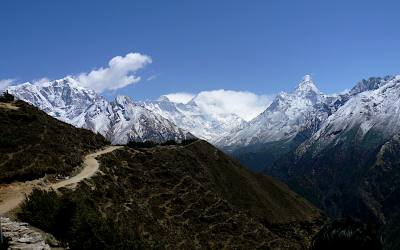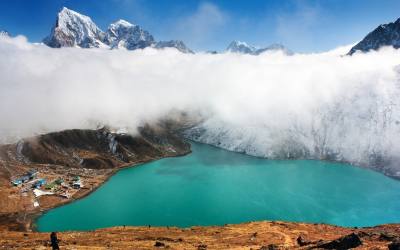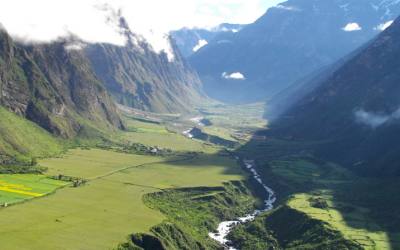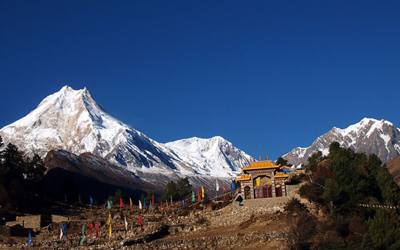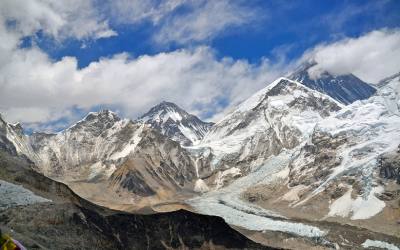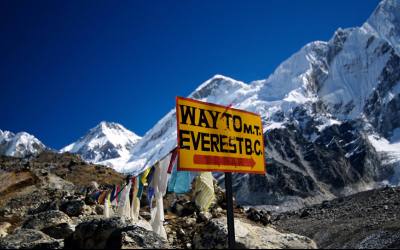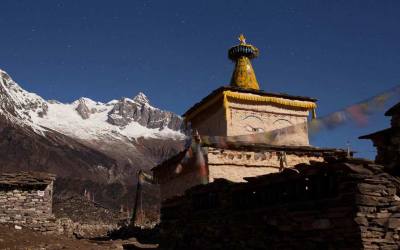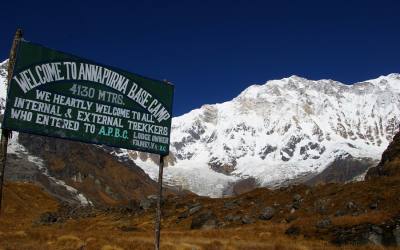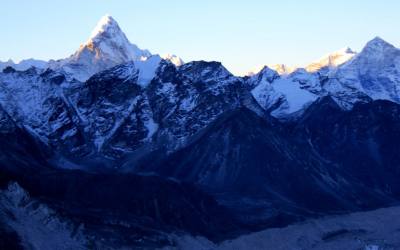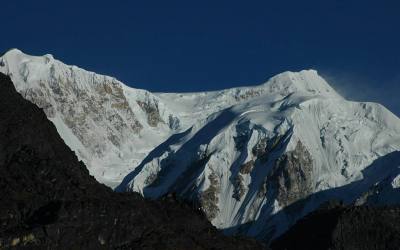Annapurna area is the most popular trekking region in Nepal, every year visited by 70 percent of trekkers, and for good reason. the deep valleys and high mountains encircling the giant Annapurna himal embrace a wide range of peoples and terrains, from subtropical jungle to a geographic extension of high, dry , Tibetan Plateau. The scenery is superb mix of lush vegetation, mountain peaks and an endlessly changing procession of people.
The course is called the Marshyandi trail. It goes upstream along the Marshyandi river. Trek through canyons and gorges and move on the north side of Himalayas pass Manang. Which was once kingdom.Cross Palace, people that live in the villages on this route are the Brahman, Cheetris, Newars, Tamangs, Gurungs and brought about by Hinduism and Tibetan Buddhism.you will also see the climatic and environmental distinctiveness of the both in the south and the north of the Himalayas.
The course is called the Marshyandi trail. It goes upstream along the Marshyandi river. Trek through canyons and gorges and move on the north side of Himalayas pass Manang. Which was once kingdom.Cross Palace, people that live in the villages on this route are the Brahman, Cheetris, Newars, Tamangs, Gurungs and brought about by Hinduism and Tibetan Buddhism.you will also see the climatic and environmental distinctiveness of the both in the south and the north of the Himalayas.
Flora and Fauna
As can be imagined, the range of geographical and climatic regions has led to a diverse variety of flora and fauna within the Annapurna region. Both Pokhara and Besishahar are below 1000 meter elevation and their climate is quiet tropical. These parts of area are heavily cultivated and the landscape, therefore, largely consists of terraced paddy fields for most of the year. The area is also famous for its winter crops of oranges, which can be purchased fresh from the trees along the trails in the foothills. As you progress higher up into the hills the natural vegetation changes from the tropical species to more temperate stands of forest trees including oak, beech and rhododendron. These finally give way to coniferous forests of pine and, ultimately, juniper just below the tree line. In the rain shadow, to the north of the mountains, the landscape is quite barren being an extension south of the Tibetan plateau. Here there are only stunted bushes and shrubs except for close to the rivers where irrigated cropping is possible.
Native animals to be seen include many birds the most obvious being the pika, blue sheep and Himalayan Tahr.
People and culture
The most prominent ethnic groups in the Annapurna region are the Gurung, the Thakali and the Manangba. The Gurungs are the most widely distributed being found from the hills of Gorkha district to as far west as Palpa. There heartland, however, is centered on the hills and valleys between the Marsyandi river and the kali Gandaki. The Thakali come from the upper kali Gandaki valley around Jomsom where their traditional farming has being supplemented by trade and, in particular, hotel and restaurant businesses. The Manangba are found in the upper reaches of the Marsyandi River and are in many ways similar to the Gurungs to whom they are possibly related. They are skilled traders and trace their roots back to Tibet. Religiously, the Manangba and the Gurungs of the upper hills is Buddhist with traces of their ancient, shamanistic faith still apparent. The communities live further south are predominantly Hindu.
All of the communities, particularly the Gurungs are famed for their cultural performances, which are easily seen while trekking in the region. Many villages along the trails will arrange performances for trekkers during the main seasons.
Trekking styles:
Most of the trekking routes in the Annapurna region are well serviced by teahouses for most of their length. This is particularly true for most popular treks-the Jomsom trek, the Annapurna circuit and Annapurna base camp treks.
Trekkers should be aware, however that there is always the risk of being stranded by bad weather or injury/sickness between teahouses, particularly in the more remote parts of the trek itineraries. a good example is on the Annapurna circuit where there is one very long day when the high pass of Thorong La has to be crossed. There is little or no shelter available for most of this day and some trekkers have been caught unprepared by bad weather and altitude problems.
The treks in less developed areas, particularly the Dhaulagiri circuit and the trek east of Lamjung, definitely require trekkers to be self sufficient in food and shelter.
The classic trek in the Annapurna region is the Annapurna circuit. The complete circuit has only been possible since mid 1980’s when the Manang area was officially opened up to non-Nepali visitors. For and all-round experience of the scenery and culture of Nepal this trek has a lot to offer. Starting in the lush Marsyandi valley, that separates the Annapurna range from that of Manaslu, the scenery is composed of lush cultivated fields with dense forests on either side. In the winter season, orange tree are laden with fruits and fragrant frangipani blossoms cast their scent along the trails. As you travel higher the valley becomes more rugged until the villages and forests finally give way to the arid hills of Manang. The Thorong La pass, at 5416 meters, marks the highpoint of the treks after which the trail joins the kali Gandaki river that flows through the deepest gorge on earth.
This is a challenging trek that is not without some risks. The crossing of Thorong La can be dangerous at times, especially during unexpected snowfall so potential trekkers must make sure that they are well prepared and equipped for all eventualities. The trek can be completed in a minimum of fifteen days, starting in Kathmandu and finishing in Pokhara. If a few extra days are allowed for it is then possible to enjoy several of the possible side trips and add immeasurably to the experience. And entry permit for the Annapurna conservation area project (ACAP) is needed for this trek.
Most trekkers start the trek by taking the bus from Kathmandu to Besishahar. These days the journey accomplished in around five or six hours which allows a few hours trekking on the first day. The trail from Besishahar follows the partly constructed road as far as the small market town of Kuldi. This road can be avoided by crossing the river below Besishahar and trekking along the east bank of the river rejoining the main trail at Bhul Bhule.
The first few days of the trek follow the Marshyangdi through scattered farming communities by a mixer predominantly composed of Gurungs but with a sizeable numbers of Brahmin communities. The crop range from rice and wheat at the lower elevations to corn, millet and barley as the altitude increases. Above the valley floor the hills are cloaked in forest with the occasional clearing indicating human settlements. Higher still, the snowy peak of the Annapurna and the Manaslu ranges dominate the skyline. A feature of this section of the trek is the number of high waterfalls that cascade down into the main river. The valley rises slowly slow altitude sickness is rarely a problem at this stage.
After a four days on the trail the river, which has been flowing from the north changes its course and flows from the west. At this point the landscape changes with steep rocky gorges on its side and large stands of pine making up the forest cover. By the time the district headquarters of Chame has been passed the hills are becoming more and more barren and the people predominantly Manangba. Look for a number of ancient temples, some of which represent the pre-Buddhist, Bon religion.
The tree line is reached a few hours before arriving at mustang where a compulsory rest day should be taken for acclimatization to the increasing altitude. There are a number of possible side trips from Manang that can be taken on the acclimatization day. Perhaps the most spectacular is to the west, across the river and up to the Gangapurna glacier with its deep blue lake formed by the melting glacial ice. The Himalayan rescue association clinic is located in Manang village and holds afternoon awareness lectures for trekkers warning of the dangers of AMS. These lectures are well worth attending.
From Manang, the trial passes through high alpine pastures until the small cluster of teahouses at Thorong Phedi id reached. An early morning start from here will allow you to reach Thorong La by mid morning and then start the long descent across the scree slopes to Muktinath before the afternoon cloud sweeps in. the whole section have no permanent settlements and shelter is hard to find. For safety, trekkers should never travel alone this section.
Muktinath, a famed pilgrimage site for both Buddhists and Hindus, is the first major settlement reached after the crossing of Thorong La. Be sure to visit the temples here and especially look for the eternal flame, fuelled by natural gas, which can be found in the small Buddhist temple below the main shrine.
From Muktinath the views of the west are now of the Dhaulagiri range while to the north can be seen the arid hills of upper mustang. The trial Leeds down through villages inhabited by people of Tibetan stock until it reaches the banks of the kali Gandaki River, the home of Thakali people. A further four days trekking down through this, the deepest valley on earth, brings you to the road head at Beni from where buses to Pokhara can be found. Settlements of particular interest below Muktinath are Jomsom with its airport, a possible exit point to Pokhara,
Part of Annapurna circuit and Tilicho lake trek
Day 01:Arrival in Kathmandu and transfer to hotel (1,350m/4,429ft)( Tourist class hotel)
Day 02:Drive from Kathmandu to Besisahar then to Dharapani by private jeep (1,960m/6,431ft ) lodge.
Day 03:Dharapani to Chame(2,710m/8,892ft ) lodge
Day 04:Chame to upper Pisang (3,300m/10,827ft) lodge
Day 05:Upper Pisang to Braga village (3,519m/11,546ft ) lodge
Day 06:Braga to ice lake and return back to Manang.( Day trip) (3,519m/11,546ft) lodge
Day 07 :Manang to Siri Kharka (4,060m/13,321ft) lodge
Day 08:Siri Kharka to Tilicho Base Camp ( 4,140m/13,583ft) lodge
Day 09:Visit Tilicho Lake then back to Tilicho base camp to Siri Kharka.
Day 10:Siri kharka to Yak kharka (4,110m/13,485ft)
Day 11:Yak kharka to Thorang Phedi high camp (i4,420m/14,502ft)
Day 12:Thorong Phedi to Thorong La pass to Muktinath (5,416m/17,770ft)
Day 13:Muktinath to lupra village then to Jomsom by trek.(2700m)
Day 14 :Jomsom to Pokhara by flight . The flight will take 20 mins. Afternoon free time. ( Tourist class hotel)
Day 15: By Tourist bus to Kathmandu or by flight. Tourist bus will take 7 hrs and by flight it takes only 30 mins.
Day 16: Departure( Tour Ends)
Day 01: Arrival & Transfer to Hotel in Kathmandu (Tourist class hotel)Upon arrival in Kathmandu. Our airport representative will be waiting outside the airport terminal a few metres from the exit door. Please check your name at play card. He will bring you to hotel in kathmandu. The drive from the airport to the hotel is around 20 minutes.
Hanumandhoka (Kathamdnu Durbar Square):
It is the historic seat of royalty. The Durbar Square, with its old temples and palaces, epitomizes the religious and cultural life of people. It is here that kings of Nepal are crowned and their coronations solemnized. Interesting things to see here are, Taleju temple built by king Mahendra Malla in 1954 AD, the temple of Kal Bhairab , the god of destruction, Nautale durbar, the statue of King Pratap Malla, the big drum and the Jaganath temple. It was listed in the UNESCO world heritage monument list in 1979.
On the right hand corner, a large wooden lattice screen hides an enormous gilded face of Sweta Bhairab. The screen is removed only during the Indra Jatra festival.. there are also the Numismatic museum and Tribhuban museum inside the Hanuman Dhoka palace building . Photography is prohibited inside the museums. Both the mseums remain closed on Tuesday and government holidays.
Day 02: Kathmandu to Besisahar by private jeep then by sharing jeep to Dharapani(1995m)
Jeep drive will take approximately 9-10 hours. On the way you can see villages, the river terrace of the Marshandi river and farm fields. The town of Besisahar (827m) bustle like a bazaar as the supply base for the interior of the Marshandi river and the villages of the areas around. Besisahar has a warm and sub-tropical type of climate with an average temperature of more than 20 c and almost 2000 mm of annual rainfall. Mainly deciduous forest type is found here. Dharapani there is Thorong La village, where a Buddhist Monastery was established 104 years ago.
Day 03: Dharapani to Chame(2713m)
Entering a Dence forest, cross over the bridge over tributaries and shortly afterwards near the foot of the water fall , climb steep stone steps . just beyond these up to Chame in about three and haif hour. Good views of Annapurna. The lower part of the Chame is the administrative centre of Manang district. The upper part mainly inhabited by Tibetans. There is a hot spring just below this upper section.
Day 04: Chame to upper Pisang(3292m)
Leave the upper village of Chame on the left flank follow the path in the pine forest and climb along the river repeating ascents and descents till Bharatang. From here crossing suspension bridge you will reach Manang valley. A speculates Rockwell is in view for much of this climb. It will take about 3hrs to reach upper pisang.
Day 05: Upper Pisang to Braga village. (4620m (15157ft))
Again faced with the predicament of a lower or upper route, the choice was obvious. Climbing steep switchbacks up a strenuous hill face to the town of Ghyaru, From here simply incredible views of the gorge and Annapurna II and III. A staggering 540 meters of ascent coupled with 310 meters of descent also meant the day was long and challenging–with about 7 hours of hiking and small breaks in between.
After Ghrayu, there were ups and downs to Ngawal, a charming village where they have incredible viewpoint .
Gompas, Kanis, incredible views and a monastery were the highlights of the day
At 3400m, Braga is a small village just below the more commercial town of Manang. This village is much quieter than Manang and provides the perfect location to embark on the well marked trail to Ice Lake. If staying in Manang, the simplest way to hike to Ice Lake, is to walk down to Braga and begin the hike from there
Day 06: Braga to Ice lake than to Manang- Rest day or explore to Ice lake or to Buddhist Monastery
The Ice Lake or Kicho Tal, is a high alpine lake in the Manang valley of Nepal. The lake is situated at 4620m (15157ft) and due to it's high elevation is often frozen. The Ice Lake is accessed by trekking from Manang or Braga villages. The trek typically takes 7 – 10 hours
This is very important day to use acclimatization before you got to high altitude. There are plenty of good day hikes in this area.
It is a proper Bhot valley. It lies in the confluence of river Marsyangdi and Thorang khola. On both side of valley-north and south –high Himalayan ranges are stretched continuosly from east to west of Manang Bhot. It falls in the rain shadow area of Annapurna range, where less than 300mm of annual rainfall occurs, most of which falls in the form of snow. This bhot balley is regarded as the coldest snow desert of Nepal.
Day 07: Manang to shri Kharka (4060m/13,320ft) about 4-5 hours walking distance. We trek to Sirikharkha through the upper route which follows a path down down to a river. We cross the river walk through coniferous forests, after 3 hours walking, we arrive Khangsar village. After an hour more of walking we reach Shiri Kharka. Throughout the trek we will have a clear view of Gungang Himal and Mt. Chulu. Overnight in Siri Kharka.
Day 08: Trek from Siri Kharka to Tilicho Base Camp (4150m/13,583ft) about 5-6 hours walking distance.
Today we walk an easy path that leads through the middle of the landslides area where we can see a mesmerizing view of Tlilicho. We trek up till Tilicho base camp.
Day 09: Visit Tilicho Lake (4,920m/16,138 ft) and trek back to Siri Kharka about 5-6 hours walking distance.
Tilicho Lake is located at an altitude of 4920m in the Manang district. This is the world’s highest Lake. This Lake is formed by the glacial melt of the northern slope of Annapurna Mountain and Thorung peak. This is one of the holy Lakes of Hindu people so Hindu people around the world gather in Tilicho lake to take holy baths. As this Lake is located in an isolated area of the Annapurna region so the Tilicho lake trek is one of the adventurous trekking trips in the Annapurna region. The trekkers who want to go adventurous and challenging treks in the Annapurna region Tilicho lake trek is suitable for them. Tilicho Lake trek trekkers should have a good trekking experience because during this trek trekkers need to cross the challenging pass Thorung La pass. This trek provides the best opportunity to explore hidden natural and cultural aspects of the Annapurna region. During this trek, trekkers can see the several naturally decorated gadgets which please the eye and take the heart of every trekker. In Tilicho Lake trek stunning glimpse of the beautiful mountains of the region such as Annapurna, Dhaulagiri, Machhapuchhre, Nilgiri and Himchuli always give pleasure to the trekkers which helps to make their long journey untried. Moreover, beautiful landscapes, valleys, green hills, dense forests, artistic waterfalls, tranquil lakes, pristine rivers, gorges, sacred temples, colorful monasteries, and Gompas are the other attractions of the Tilicho trek.
After breakfast, We start the day early, we hike about 4 hours than we reach Tilicho lake, The highest lake in the world also referred as the “the great ice lake” by the leader of the French expedition team .this is a large sparkling lake that lies at the foot of the north face of tilicho peak. After spending some time here we take the same route back to siri kharka. Overnight in Siri Kharka .
Day 10: Trek from Siri kharka to Yak kharka (4060m/13,020ft) walking about 4-5 hours
We descend to the uninhabited Khangsar village ,pass Tare gumba,a thousand year old monastery then follow a rock wall out of Khangsar to descend a bridge in the Thorong Khola valley. We go across a river ,hike up to a plateau to reach Yakkharka . We can see Annapurna mountains range, other peaks, blue sheep (bharal) and if you are lucky you might spot a snow leopard.
Day 11: Yak Kharka to Throng Phedi high camp (4780m)
Trail continues towards to remote throng phedi , you will not see anymore trees around here. Latter gradually climb uphill towards to base camp. Thorung phedi is a small hamlet situated near the Marshandi river. It is situated at an altitude of 4450m. just below the settlement, there is a big pasture land. All the other surroundings area are naked and snowy mountains.
Day 12: Thorong phedi (Thorong La 5514m) to Muktinath 3802m.
Today is most difficult day and highlight section of this course. It is going to be long journey and it is wise to leave early in the morning . trail continues uphill all the way to Thorong pass where you can see stone hillock with flapping prayer flag . as soon as crossing throng La trail descending all the way to Muktinath. The green, sacred land for Hindus and Buddhist.
Muktinath is a Vishnu temple, sacred to both Hindus and Buddhists. It is located in Muktinath Valley at the foot of the Thorong La mountain pass in Mustang, Nepal. It is one of the world's highest temples (altitude 3,800 m).
Day13: Muktinath Temple to Jomsom village (2720m)
You now begin the descent down the dramatic Kali Gandaki Gorge, initially through arid country in the same geographical and climatic zone as Tibet. After passing through Jharkot and Khingar villages with typical Tibetan architecture, you follow the valley floor most of the way to Jomsom which is sprawled along both banks of the Kali Gandaki .From here there are nice views of the Nilgiri peaks.
Day 14: Jomsom to Pokhara by air ( the flight will take 20 minutes) than at the afternoon sightseeing around valley
Pokhara is set in a lovely valley at the foot of the Machapuchare so you get spectacular views of the mountains from all parts of the town. It is quite different from Kathmandu, with few temples, but it does have plenty of scenic attractions and is close to the mountains. There are some interesting short walks or bicycle rides from Pokhara, you can swim and canoe on Lake Phewa or just watch the last rays of the sun stream across the dip in the mountains that hold the lake. Along the lakeside road there is a continuous stretch of small hotels, restaurants and shops; it’s an area which still has a bit of the old hippy scene feel about it.
Pokhara is a place of remarkable natural beauty. Situated at an altitude of 827m from sea level and 200km west of the Kathmandu Valley, Pokhara city is the most popular tourist destination in Nepal. This enchanting city, with a population of around 95,000, has several beautiful lakes and offers stunning panaromic views of the Himalayan peaks. The serenity of lakes and the magnificence of the Himalayasrising behind them create an ambience of peace and magic. Pokhara city is also the starting point for many popular treks in Nepal.
Pokhara is part of a once vibrant trade route extending between India and Tibet. To this day, mule trains can be seen camped on the outskirts of the town, bringing goods to trade from remote regions of the Himalaya. This is the land of Magars and Gurungs, hardworking farmers and valorous warriors who have earned worldwide fame as Gurkha soldiers. The Thakalis, another important ethnic group here, are known for their entrepreneurship.
The climate of Pokhara is slightly warmer than Kathmandu with daytime temperatures of around 15 degrees Celsius in the winter and 35 degrees in the summer.
Sarangkot
The view of the Annapurna Himalaya from Sarangkot is almost a religious experience. From here, you can see a panoramic sweep of Himalayan peaks, from Dhaulagiri (8167m) in the west to the perfect pyramid that is Machhapuchhare (6997m) and the rounded peak of Annapurna II (7937m) in the east. Most people come here at dawn or dusk, when the sun picks out the peaks in brilliant colours.
Fewa lake
Fewa Lake, the second largest lake in the Kingdom, is the center of attraction in Pokhara. It is the largest and most enchanting of the three lakes that add to the resplendence of Pokhara.
Mahendra cave
Another of nature’s wonders in Pokhara is the Mahendra Gupha. This large limestone cave is locally known as the House of Bats, an apt name for it. A two-hour walk to the north of Pokhara, it is best to bring your own torch to see the stalactites and stalagmites, as well as the local winged residents.
Seti River
Another of Pokhara’s natural wonders that unfailingly interests visitors is the Seti river. Flowing right through the city, this river runs completely underground at places. Amazingly, at certain points the river appears hardly two meters wide. But its depth is over 20 meters! Mahendra Pul, a small bridge near the old MissionHospital, provides a perfect view of the rivers’s dreadful rush and the deep gorge made by its powerful flow.
Barahi Temple
The Barahi temple is the most important monument in Pokhara. Built almost in the center of Phewa Lake, this two-storied pagoda is dedicated to the boar manifestation of Ajima, the protectress deity representing the female force Shakti. Devotees can be seen, especially on Saturdays, carrying male animals and fowl across the lake to be sacrificed to the deity.
Museum
The Pokhara Museum, located between the bus stop and Mahendra Pul, reflects the ethnic mosaic of western Nepal. The lifestyles and history of ethnic groups such as the Gurung, Thakali and the Tharu are attractively displayed through models, photographs and artifacts. One major attraction is a display highlighting the newly-discovered remains of an 8000-year-old settlement in Mustang.
Open daily, except Tuesdays and holidays, from 10 am to 5 pm
Day 15: By tourist bus or by air to Kathmandu. The bus journey will take 6 to 7 hrs and by air it takes 30 minutes, when you take early flight than at the afternoon self visiting to Bhaktapur city
Bhaktapur
Situated at an altitude of 1,401m, Bhaktapur covers an area of four square miles. Bhaktapur or the city of Devotees still retains a medieval charm and visitors to this ancient town are treated to myriad wonders of cultural and artistic achievements. The past glory of the Malla rulers continues to be reflected at the Durbar Square. Pottery and weaving are its traditional industries. Bhaktapur is famous for woodcarving and the Bhadgaolen topi or cap. The city lies about 14 km east of Kathmandu and can be reached by public transport and by trolley buses.
Bhaktapur durbar Squares:
The Golden Gate is the entrance to the main courtyard of the Palace of 55 Windows.Built by King Ranjit Malla. The gate is one of the most beautiful and richly carved specimens of its kind in the entire world. This gate is embellished with deities and monsters with marvelous intricacy. The palace of 55 windows was built in 1700 AD. Among the brick walls in their gracious setting and sculptural design, is a balcony of 55 windows. This balcony is a masterpiece of wood carving. The stone temple of Batsala Devi which is also located in the Durbar Square is full of intricate carvings. This temple also sets a beautiful example of Shikhara style architecture in Nepal. There is a bronze bell on the terrace of the temple which is also known as the Bell of Barking Dogs.
This colossal bell, placed in 1737 AD, was rung to signal curfew those days.
The main square of the city contains innumerable temples and other architectural showpieces like the Lion Gate, the statue of King Bhupatindra Malla, the Picture Galley, the Batsal Temple, etc. A magnificent statue of King Bhupatindra Malla in the act of worship is placed on the column facing the palace. It was listed in the UNESCO World Heritage Monument list in 1979.
Changu Narayan:
Situated at the end of a long ridge which runs well into the Valley, It is said to have been built by king Hari Dutta in 323 AD said to be the oldest temple in the valley. It was listed in the UNESCO world Heritage Mountain list in 1979
Day16: Tour Ends ( Departure onwards)
Price for meals and drinks during the trek Allow US$ 25 per person per day for trekking (off-course you are going to pay every day directly by yourself to the tea houses during the trek.it is just a guideline)
Single supplement US$ 150.00 per person ( you will get single room in kathmandu and during the trek. you can also book your trekking tour as a single person with us. in this case we will charge little higher)
Additional night in kathmandu will cost US$ 40.00 for Double room with Bed and Breakfast and US$ 35.00 for single room.
Additional night in Pokhara will cost US$ 40.00 for Double and US$ 35.00 for single room with bed and breakfast.
Off-course it is always possible to upgrade the hotel in kathmandu according to your budget and interest. But it will cost you extra and you need to pay the differences.
Hotel we use in this tour
Kathmandu Prince Hotel (standard class hotel)
Website : www.kathmanduprincehotel.com
Or
Potala Guest House (Standard class hotel)
Website : www.potalaguesthouse.com
Or
Hotel Marsyandi Mandala (Standard class hotel)
http://www.marsyangdimandala.com
Hotel we use in Pokhara
http://hotelicelandpokhara.com/
or
http://www.hoteldandelion.com/
or
http://hotelkantipur.com
or
https://www.facebook.com/hotelpokharavillage/
Delux class hotel
Grand Hotel Kathmandu (4star)
http://www.grandhotelnepal.com
Hotel Yellow pagoda (4 star)
www.yellowpagoda.com
Radission hotel kathmandu (5star)
https://www.radisson.com/kathmandu-hotel-np/nepkathm
Hotel Yak & Yeti (5star)
http://www.yakandyeti.com/
Hotel Barahi (Delux hotel 4 star)
http://www.barahi.com
Hotel Temple tree resort and spa (Delux hotel in Pokhara) 5 star
http://templetreenepal.com
Fishtail Lodge Pokhara (5star)
https://fishtail-lodge.com/sites/
http://fishtail-lodge.com/fishtail/
shangri-La Kathmandu & Pokhara (5star)
Address: Lazimpat, Kathmandu Nepal
http://hotelshangrila.com/
Note: As per our company rule to confirm your booking with us we do need photo copy of your passport, one passport size photo graph, international flight details (Date of arrival , date of departure ,flight number ) and 15% of total amount as a down payment. Rest remaining other amount you can pay to us upon your arrival in kathmandu. Once you agreed to booking with us then we can provide you our bank details to make wire transfer or you can also pay by major credit cards such as visa, Master or by American express. in this case you need to send us copy of your credit cards. But it will cost you 5% extra because it is the rule of our local bank.
Note: If someone who is willing to book their trekking tour as a private tour then the tour will departure every day.
What’s Included
•Airport Pickup and Drop by private transport (for Domestic and International flight)
•Kathmandu to Besisahar by private Jeep than by local sharing jeep to Dharapani. The drive will take around 10 hour. The land crusher will have 6 seats)
•Jomsom to Pokhara by flight.
•Airfare for trekking guide and porters
.Pokhara to Kathmandu by tourist bus.
•Tourist bus ticket for porters to return back to Kathmandu.
•2nights hotel in Kathmandu with Bed and Breakfast at tourist class hotel .
•1nights hotel in Pokhara with Bed and Breakfast at 5 star hotel ( Hotel Temple Tree)
•12nights 13 days trekking in lodges (lodges are simple but clean enough and has a hot and cold shower ..But we will try our best to provide you better accommodation along the way.
•Annapurna National Park Permit and Tims card (Trekking information management system) we need two photo each for permit
•One experience Trekking guide (trained by Ministry of tourism), one Trekking porter for two people. Every porter they will carry maximum 22 k.g. of baggage.), price will includes their meals, accommodation, transportation, equipments and insurance.
•Trekking Maps for Annapurna Region
•First aid kid box
•Sleeping bag and Down Jacket for trekking
•Light cramspoons for trekking (Required on the month of November, Dec, Jan, Feb and early March)
•All the Government tax
What’s not Included
•Personal bar bill, travel insurance/International airfare/Domestic airfare.
•Items of personal expenses such as alcoholic drinks, cold drinks, laundry, tips etc.
•Nepal entry visa fee US$ 50 (duration 30 days from date of issue)- Available at Royal Nepalese Embassies and Royal Nepalese Consulates abroad or on arrival at Tribhuvan International Airport in Kathmandu.
•Tips for trekking guide and porter
All the meals and drinks during the trek (Breakfast, Lunch, Dinner, Tea or coffee) kindly note mineral water, soft drinks , alcohol are extra.
